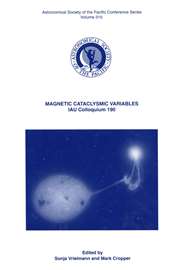No CrossRef data available.
Article contents
The Frequency of Novae in the Galaxy
Published online by Cambridge University Press: 12 April 2016
Abstract
Core share and HTML view are not available for this content. However, as you have access to this content, a full PDF is available via the ‘Save PDF’ action button.
Recent statistics indicate that each year an average of 3.5 novae or nova-like objects are discovered in the Galaxy. With reasonable assumptions about the completeness of the surveys, we arrive at an overall galactic production rate of 76 ± 38 y−1. When recurrent novae are omitted, this rate drops to 60 + 30 y−1. Hence, it seems that our Galaxy is more prolific than M31 in nova production. The total amount of material released into galactic space by novae each year is about one-tenth that ejected by supernovae.
Information
- Type
- V. Nova and Dwarf Nova Outbursts
- Information
- Copyright
- Copyright © Reidel 1987

